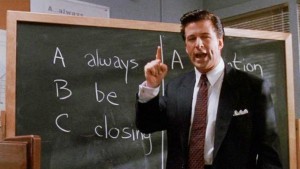Fundraising: From Observer To Participant

What’s your opinion?
Let’s say that you run a non-profit organization that wants to build stronger relationships in the community. You want to reach out to existing clients and to people that you haven’t served before. You want to build long-term relationships and a strong base of support.
You’ll probably want to start by enriching and expanding your communication programs. You might invest more in community outreach and in public service announcements. You could launch a newsletter. Volunteering to speak at various events and civic clubs is also a good idea.
Many communication programs, however, are rather passive. People in the community can see what you’re doing but they’re not interacting with you. They’re observers rather than participants.
It’s good to be seen. To build a strong web of relationships, however, you need to do more. You need to entice people to interact with your message and your program. Interaction leads to involvement. Involvement leads to commitment. Commitment leads to lifelong passion and support.
Building passionate support takes time and persistence. You can stimulate temporary interest with a catchy campaign. But deep, rich, long-term support requires a different level of commitment. You should start long before you need the community to passionately support you.
Think of a community engagement campaign as a wedge. Too often, we aim at the wrong end of the wedge – the thick end. We want to “move the needle”, “shake things up”, and “put our organization on the map.” We hope that a moving message and a clever campaign will quickly create the support we need.
Too often, such campaigns fail because we forget about the difference between observers and participants. Even a brilliant campaign with a well-crafted message allows our clients and potential clients to remain observers. People may remember a catchy slogan, but they haven’t interacted in any meaningful way. Like a pop song, a catchy slogan is quickly replaced by a brighter, fresher campaign.
The trick to building commitment is to start at the thin end of the wedge. Start by asking for small commitments, not big ones. Create activities that entice people to interact, not merely observe. Build stepwise programs that start small and gradually grow larger. Take your time.
Here are two ways to start small. They’re not clever or slick. In fact, they’re rather mundane. But they both ask community members to interact with your program, not simply observe it.
1) Telephone survey – your organization probably impacts the community in several ways. You construct a phone survey that itemizes your impacts and asks for feedback. The survey is simplicity itself: “Our organization impacts the community in three ways: A, B, and C. Which one of these is most important to you and your family?” You’re not asking for money or time; you’re simply asking for an opinion. Respondents hear your message and give an opinion. They’re no longer observers. They’re now participants. They’ve taken the critical first step. They’re on the wedge.
2) 25 words or less – your next step might be to sponsor a write-in contest with an interesting prize. Ask community members to write an essay of 25 words or less (or maybe 50 or 100) with the topic, “Why NPO X is important to me”. The best essay wins the prize. You’ll get some great ideas. More importantly, you’ll entice hundreds of people to nudge themselves into deeper and broader support. They’re moving up the wedge.
(By the way, don’t make the prize for the essay contest too big. You want participants to think, “I’m writing this essay because it’s important to me” rather than, “I’m writing this essay because of the prize.”)
What next? I’ll have some thoughts on that in future articles. In the meantime, start getting your clients to participate rather than observe.
Always Be Conversing

He was so young!
In the 1992 movie, Glengarry Glen Ross, Alec Baldwin played a very hard-nosed sales manager determined to teach a bunch of rookies how to sell. He used intimidation, fear, stress, and money as motivators. He didn’t believe in being nice. He believed in closing.
Baldwin also introduced a term that I’ve heard many times since: Always Be Closing or ABC. The idea is simple – you’re always looking for prospects, qualifying them, moving them through the sales process, and closing them. Then you start over. You’re like a shark – always moving, always eating.
Always Be Closing is associated with pushy, high-pressure sales tactics. You might find them in use at car dealerships or time-share condo conventions. We’re all familiar with them and we all profess to hate them.
Now what about nonprofits? Is Always Be Closing an appropriate technique for raising funds for a nonprofit organization? I don’t think so. For me, nonprofit fundraising is all about relationships. It’s about building for the long run, not closing in the short term.
So I’ve created a new ABC for non-profits: Always Be Conversing. A conversation, of course, has two parts: talking and listening. Always Be Conversing suggests that we’re always ready to talk about our nonprofit organization (NPO) and listen to our constituents’ needs. By conversing with constituents, friends, and our broader network of acquaintances, we build relationships. Over time, those relationships allow us – quite naturally – to ask for donations.
Always Be Conversing also implies that we actively seek out conversations. To create rich conversations, we need to prepare ourselves. Here are some pointers:
- Always have a story – people love stories – they’re easy to understand, relatable, and memorable. When you tell a story, you’re not being a pushy sales person. Rather, you’re building relationships, awareness, and interest. Tip: focus on outputs, not inputs. If your NPO donated a million dollars for scholarships last year, that’s an input. It’s an interesting fact but not a story. On the other hand, if you can describe how your scholarships changed people’s lives, that’s the output of your investment. It’s also a memorable story that most people will be eager to hear.
- Use conversation starters – how does anyone know that you’re passionate about your NPO? How does anyone know that you’re a source of information and assistance? The simplest way is to wear some identification. If you wear a lapel pin or a brooch or a jacket with your NPO’s logo on it, people can identify you and have a conversation. It can happen at random times, so always have a story ready.
- Don’t ask, offer– my NPO is the National Multiple Sclerosis Society. When I wear my NMSS jacket to the grocery store, people frequently ask me about my connection to the Society. Then they often say, “My (wife, cousin, mother, neighbor, etc.) has MS.” I typically respond by saying, “How can I help?” As it happens, NMSS can help in a variety of ways, from insurance advice to exercise programs. But I’m also invoking the reciprocity principle – you’re more persuasive if you offer a favor before requesting a favor.
Over the coming weeks, I’ll write more about fundraising for nonprofits through story telling and relationship building. In the meantime, start telling your stories. You’ll be surprised at the impact you can have.
(My NPO is the National Multiple Sclerosis Society. If you need information about multiple sclerosis or help in dealing with it, just drop me a line. I want to Always Be Conversing).